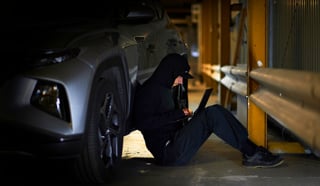Company rules dictate that Vauxhall chairman Bill Parfitt has to produce his driving licence each time he wants to drive from his headquarters in Luton.
Before he’s even allowed to start the engine of his car, the General Motors UK chief executive is required to prove to a fleet management centre official that his DVLA credentials are in order.
“No-one is allowed to drive any of our cars without first showing their driving licence – there are no exceptions and this rule is accepted by everyone as a zero-tolerance area. I’m pleased to say that Mr Parfitt is more than happy to comply,” says company vehicle operations manager Simon Monk.
Acknowledged as a champion of driver safety in British car manufacturing, the Vauxhall boss has put his stamp of authority on licence-showing - along with a raft of other procedures designed to make sure that his top managers and sales personnel behave in a responsible manner when they’re out on the road.
This management buy-in is critical for the success of any such initiative and now, after six years of internal campaigns to cut accident risk, Vauxhall has driven away with Brake’s coveted company driver safety award for excellence.
In addition, the firm won a commendation for fleet safety analysis and action and Monk was also a nominee for road risk manager of the year.
“To put it simply, we wouldn’t be where we are without his support. Traditionally, people resist the kind of work I do because they regard it as non-core business…and you don’t get to change that kind of internal culture without the backing of a senior executive,” says Monk.
A Vauxhall employee for 26 years and in charge of fleet management for the last six years, Monk oversees a total of 5,000 company cars provided for business use or supplied to employees as part of benefit packages.
“That means I manage all the associated risks, insurance programmes and all the initiatives designed to make the company proactive with safety rather than reactive when it comes to collision statistics,” he explains.
“I think what we do demonstrates that if you’re to manage something, it has to be measured in the first instance. It’s natural for all of us to regard ourselves as great drivers, but six years ago, we started to appreciate that if we investigated every single accident claim, we could soon identify many areas of driving that were ripe for improvement.
“We began to look at the age and profile of the claimants, circumstances of the accidents and contributing factors like the size of the engine or size of the car. It resulted in a best practices document that formed the basis of our safe driving policy,” he says.




















Login to comment
Comments
No comments have been made yet.